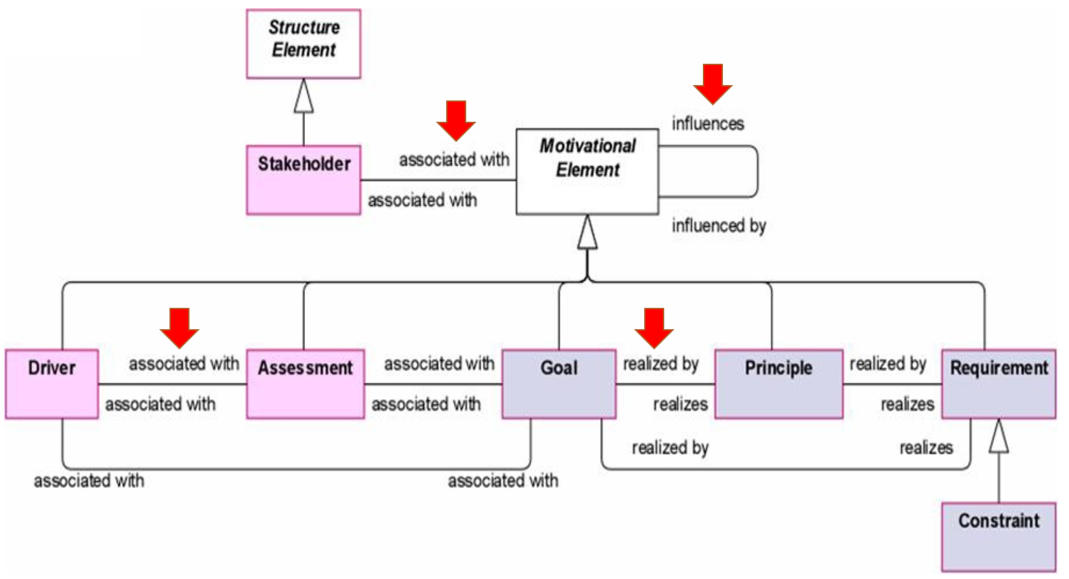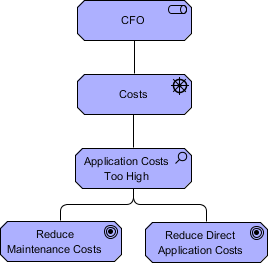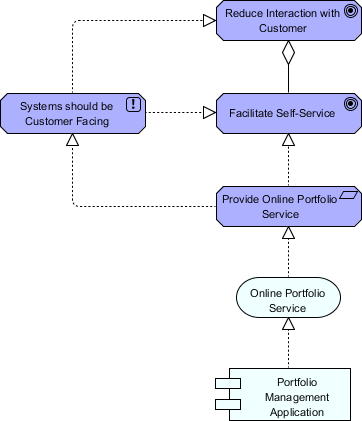The metamodels and examples from show the different types of relationships that can be used:
- between two motivational elements
- between one motivational element and one core element.

The Table below provides a description of these relationships:
| Intentional Relationships | Notation | |
| Association | Association models that some intention is related to a source of that intention. | |
| Aggregation | Aggregation models that some intentional element is divided into multiple intentional elements. |  |
| Realization | Realization models that some end is realized by some means. | |
| Influence | Influence models that some motivational element has a positive or negative influence on the realization of another motivational element. | |
Association Relationship Example:
The Diagram below shows that Costs are a concern of the CFO:

- Application costs are too high
- Organization wants to Reduce Maintenance Costs and Reduce Direct Application Costs.
Aggregation Relationship Example
The Diagram below shows the two ways to express the decomposition of goal Reduce workload employees into the sub goals Reduce interaction with customer and Reduce manual work.

Realization Relationship Example
The Diagram below illustrates several ways to use the realization relationship.

- Principle Systems should be Customer Facing is a means to realize the goal Reduce Interaction with Customer.
- Requirement Provide Online Portfolio Service is a means to realize sub-goal Facilitate Self-Service, and to realize the principle Systems should be Customer Facing.
- This requirement can be realized by the business service Online Portfolio Service.
Influence Relationship Example
The Diagram below illustrates the use of the influence relationship for making a trade-off between the two requirements (assign personal assistant and provide on-line portfolio service) that realize the goal Improve portfolio management.

- The goal Increase Customer Satisfaction and the principle Systems should be Customer Facing are used as trade-off criteria.
- Both requirements positively influence the intended increase of customer satisfaction.
- The requirement of Provide Online Portfolio Service also positively influence the intent of Systems should be Customer Facing.
- The requirement of using a personal assistant greatly increases customer satisfaction.
- However, the Assign Personal Assistant requirement scores a lot worse for the customer-facing criterion and Reduce Workload for Employees.
Other ArchiMate Resources:
- What is ArchiMate?
- Full ArchiMate Viewpoints Guide
- ArchiMate 3 Update
- What’s New in ArchiMate 3?
- Using ArchiMate Tool with TOGAF ADM